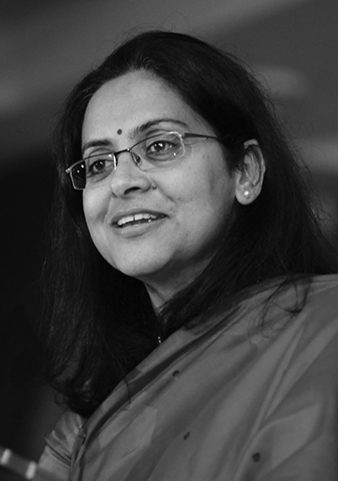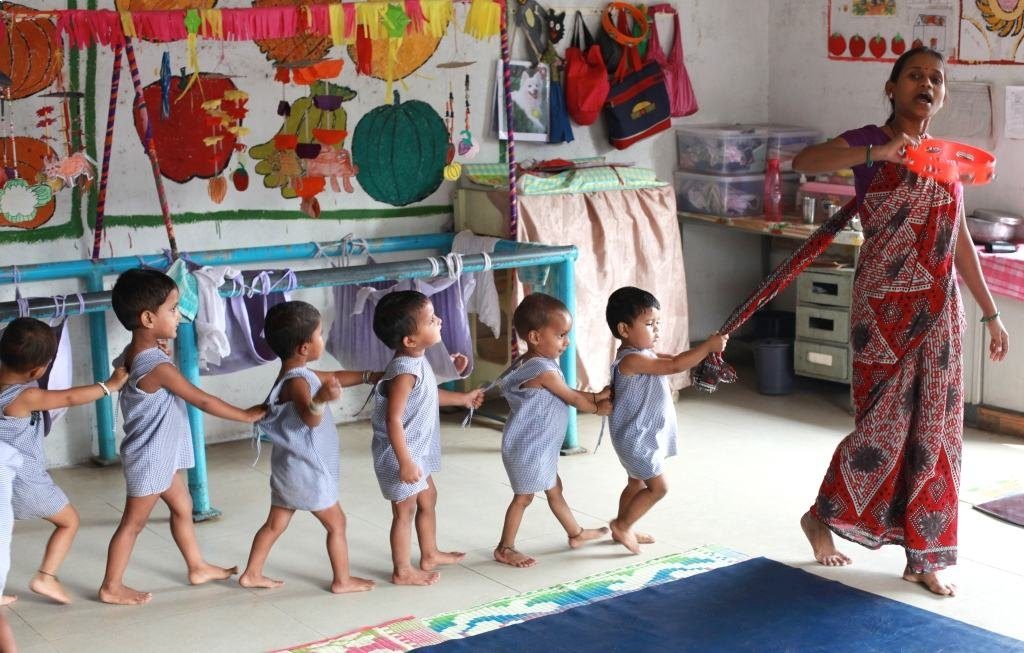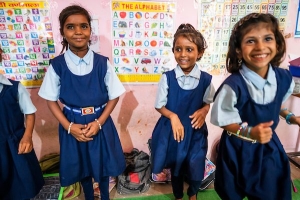Rukmini Banerji, CEO of Pratham Education Foundation, draws on her extensive experience in the field of early learning to look at how the draft National Education Policy (NEP) tackles the critical issue of foundational learning.
CSF: The draft NEP seems to have finally recognized what ASER (Annual Status of Education Reports) have been highlighting for nearly a decade. What are your thoughts on what it has said on foundational learning?
Rukmini: Since 2005, ASER has consistently demonstrated that children’s reading and arithmetic levels are extremely low and this is leading towards a learning crisis. We know that this has serious implications for what children are able to learn in higher grades, with data showing that their learning trajectories remain relatively flat over time. So, the draft NEP’s mission to address this crisis head-on is worth applauding. The draft policy states that “attaining foundational literacy and numeracy for all children must become an immediate national mission and an indispensable, non-negotiable part of the curriculum.” Before this, no education policy had made such an urgent case for foundational learning. Although there are many facets of the education system that need revision, the draft policy is right in placing foundational skills as the core activity, at least in primary schools. Recognizing and accepting the problem is the essential first step to finding a pathway towards the solution.
The widespread phenomena of “falling behind” that we see today happens because the right things are not done at the right time.

CSF: The draft NEP includes pre-primary education as part of the “foundational stage” (ages 3 to 8) and strongly recommends that this stage must be a continuum. Do you agree? How should we approach this?
Rukmini: I welcome the strong focus on the early years. Building strong foundations in the early years allows children to “leap forward.” The widespread phenomena of “falling behind” that we see today happens because the right things are not done at the right time. In our own work, we have spent close to 15 years in developing an effective, durable and frugal way of ensuring that children who have been “left behind” are able to acquire foundational skills quickly. Now we are turning our attention in all our programs (direct and in partnerships) to integrate early childhood components and effective strategies for growth that last well into primary school years.
The draft policy states that children in the 3-8-year age group should receive a flexible, “play-based, activity-based, and discovery-based education.” However, it is fair to say that the educational establishment in India, including the government bodies at central, state and district levels that have so far guided schools, have little or no experience with the preschool age group.
Pre-primary classes are often part of primary schools in the private sector and much of the student intake happens in lower or upper kindergarten. However, research studies show that most activities in these institutions in the early age group are “school-like” and do not provide the flexible, play-based and developmentally appropriate activities that are suited for supporting the development of young minds. So, despite several years of preschool education, such children are still not “ready” for class 1. At the same time, the Integrated Child Development Services (ICDS) system run by the Ministry of Women & Child Development (MWCD) is typically overwhelmed by responsibilities in health, immunization and nutrition. So, in anganwadis, early childhood stimulation or development has not received the high priority that it needs.
Bringing these two ministries together, all the way from the Centre to the states, districts and villages, will be a huge and challenging task, but one that is certainly worth undertaking. Clear financial calculations will be needed to support this convergence exercise in a sustained way.
Overall, significant support and strengthening of delivery of early childhood education will be needed keeping in mind local context, needs and opportunities. For example, in the past year, in Punjab and Himachal Pradesh, the state government has already taken the step of creating pre-primary classes in their primary schools (in all government primary schools in Punjab and in about 3,000 schools in Himachal). The learnings from their experiences could be useful for other states. Starting pre-primary classes in government schools and facilitating proper transition from anganwadis to pre-primary classes to class 1 should help in exposing children to developmentally appropriate activities at the right time and right age, and hence pave an effective pathway for strong foundational learning.
The draft NEP doesn’t address the negative consequences of overambitious curricula or the common practice of teaching to the top of the class.
CSF: One of the objectives the draft NEP states is that every child in grade 5 and beyond should achieve foundational literacy and numeracy – can you talk about some of the specifics with regard to the pedagogical and curricular changes that will be needed to achieve this goal?
Rukmini: According to ASER data, only about 50% of class 5 children are able to read at class 2 level (or higher). The other half is spread across several reading levels, starting from not being able to even recognize letters to just about coping with simple sentences. This is one of the biggest challenges in primary schools, the wide dispersion of learning levels. The teacher’s daily dilemma is to figure out what to teach and to whom. To complete the curriculum guided by grade-level textbooks, teachers usually choose to only focus on the “top of the class,” leaving others to catch up on their own. Even the RTE Act prescribes that teachers “must complete entire curriculum within specified time.”
The draft NEP highlights several causes for the learning crisis, including the lack of school readiness, but it doesn’t address the negative consequences of overambitious curricula or the common practice of teaching to the top of the class. The real challenge is, therefore, to schedule “catch-up” routine into the regular school schedule. Given the size, depth and magnitude of the “catch-up” that is required, we will need a persistent and high priority effort for at least five years or more. The alignment of key elements of the school system such as teacher training, teaching-learning material, ongoing teacher support, mentoring-monitoring, assessment, and course correction towards achieving stated goals is critical. Perhaps this alignment for foundational learning will now be possible given the overarching direction of the new policy.
CSF: The draft NEP also talks about the requirement for remediation, and the role the community can play in this regard. How far do you think remediation can work, and in what form?
Rukmini: The draft policy suggests two programs: The National Tutors Programme, in which the best students in each school can help younger students, and the Remedial Instructional Aides Programme, where local instructors, especially women, can work with students in need of additional help. The policy suggests that the tutors and aides can also be awarded certification for their service, to encourage further participation of the community.
At Pratham, we have found the idea of “education for education” (shiksha ke badale shiksha) to be a powerful one; if you give time to help younger children in your village, you “earn” credit towards your own continuing education. In the last decade, our organization has experimented with different versions of “education for education” in both anganwadis and primary schools. In my experience, the incentive of recognition and credits can encourage productive community participation. Schools usually work in isolation from the community. Excluding parents and the larger community partners from the child’s learning process aggravates the learning crisis, especially in the early years.
A version of these views has been expressed in an article on www.theindiaforum.in



